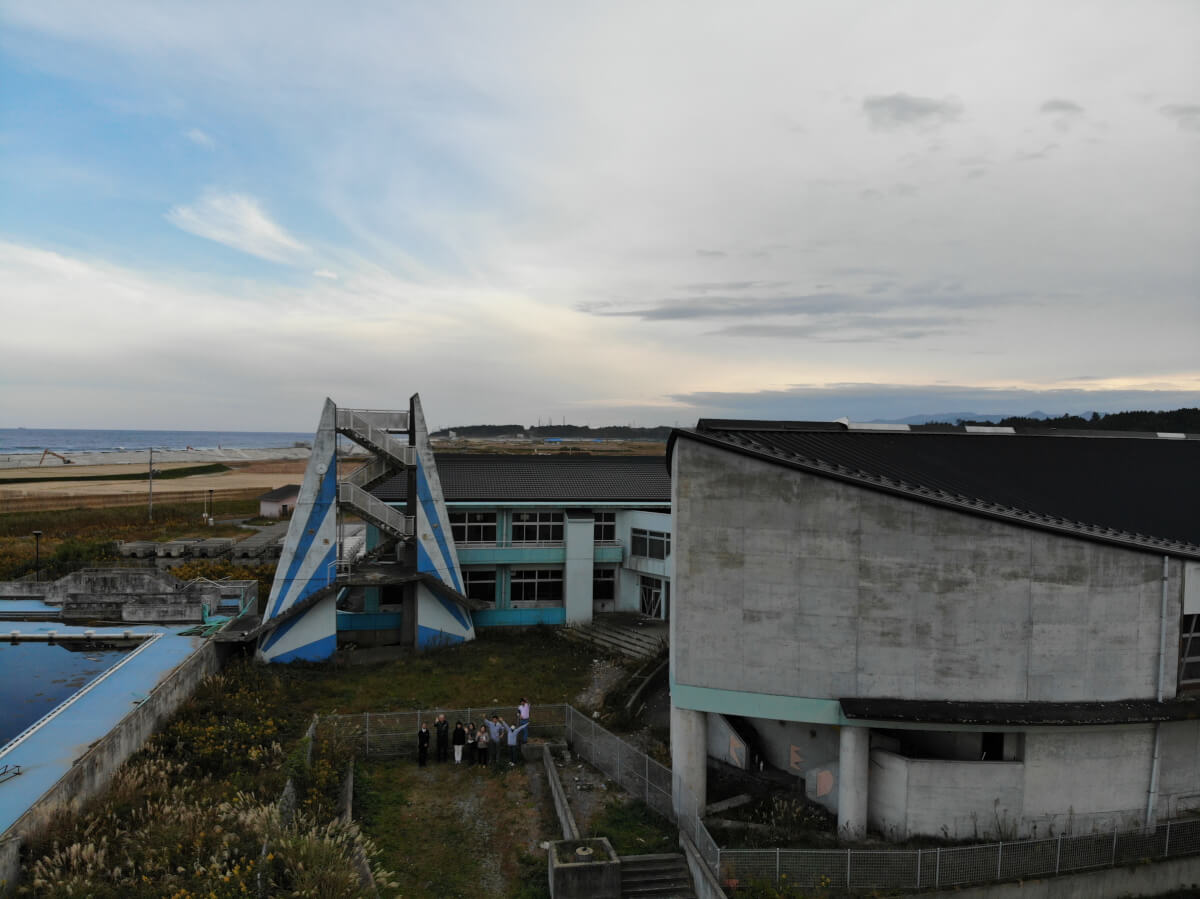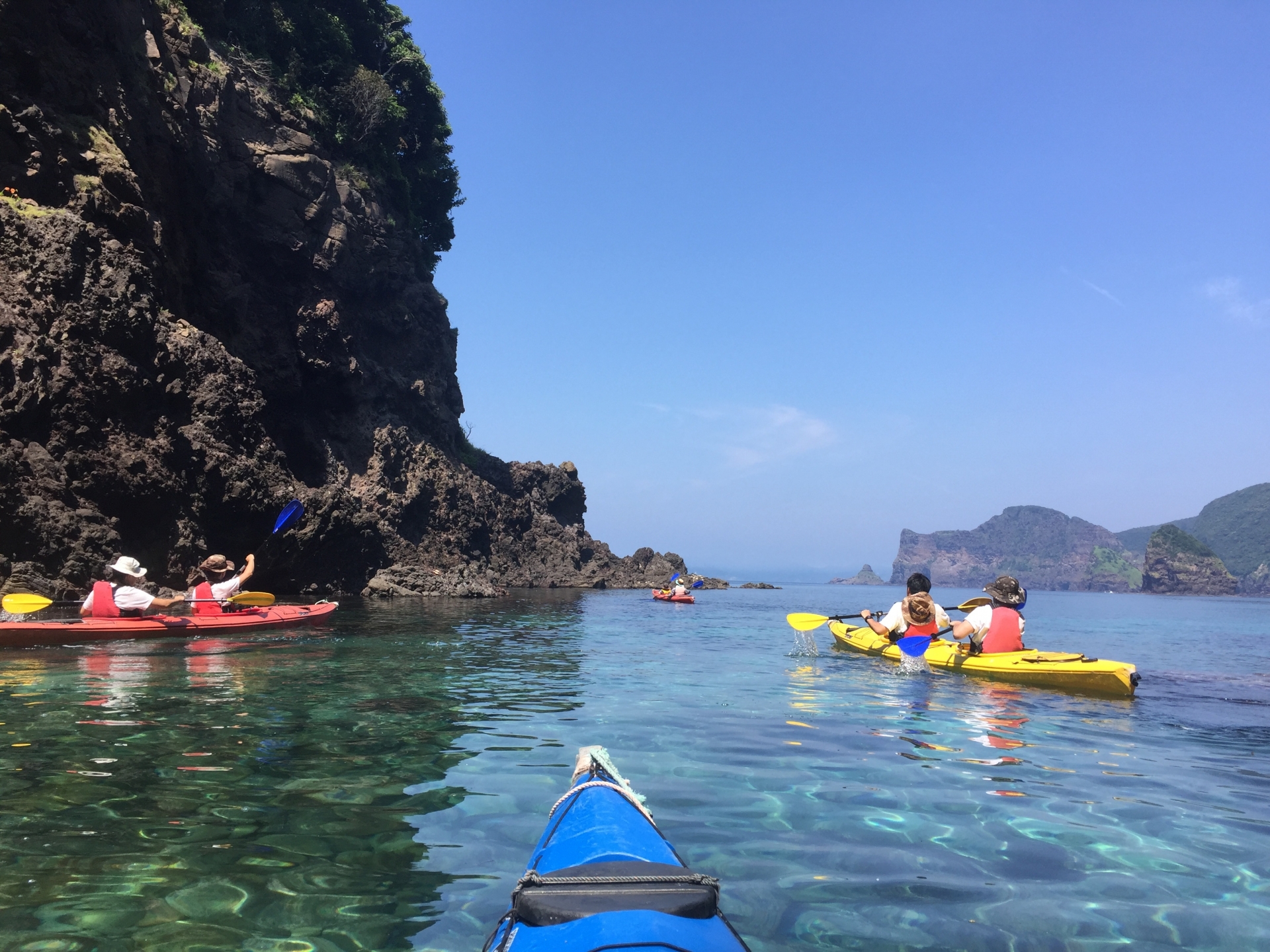The FUTABA Art District is a project to help increase the amount of art in Futaba town. Futaba is the only town that is still fully evacuated due to the Fukushima Daiichi Nuclear Power Plant accident. The evacuation order has been lifted in some parts of the town, including the JR Futaba Station area, and the evacuation order for the “Specified Reconstruction Areas” is expected to be lifted in June of this year, but there is still no one that has moved back. Currently, entry restrictions have been eased and infrastructure improvements are underway.
This project started from a chance encounter between Mr. Akazawa, the representative of OVER ALLs(a wall painting production company) and Mr. Takasaki, the owner of “JOE’SMAN”(an izakaya establishment) in Futaba Town, when he made a visit to Mr. Takasaki’s other location “JOE’SMAN2” in Setagaya ward in Tokyo.
What is an Art District?
According to OVER ALLs, they are areas that first started overseas where factory and warehouse districts have been transformed into photogenic spots after having been rented out to artists. These Art District movements have helped to increase the value of an area and Futaba town has been trying to follow suit.
1. 『Graph Balcony 〜FUKUSHIMA〜』
This first painting was done on the exterior wall of the former “Kitchen Takasaki” and “JOE’SMAN” in front of Futaba Station. This is a piece of artwork that portrays a man and a woman in the motif of Shakespeare’s Romeo and Juliet. The fence in front of the woman represents radiation levels, while the man is wearing special clothing to protect him against the radiation. The two are hoping for the end of the nuclear power plant accident, and that they will be united again when the radiation levels go down.
2. 『HERE WE GO』
This second piece of art is also painted on the exterior wall of the former “Kitchen Takasaki” and “JOE’SMAN” site. The hand in this painting is that of Mr. Takasaki, the man who used to run “JOE’SMAN,” in Futaba. The words HERE WE GO are proof of a strong will for the future that a new beginning should start from “Here”, where a store once loved by the people of the town existed.
3. 『First Penguin』
The woman modeled in the mural painted right next to “Here We Go” is Yoshida-san, who used to be the owner of Penguin, a fast food restaurant that has long been a favorite of the locals. Ms. Yoshida was nicknamed “Auntie Penguin”, and was somewhat of an advisor to the local high school students as she would always listen to and give advice about their worries and problems. Penguin reopened in 2020 after 13 years, and is now on the first floor food court of the Futaba Business Incubation and Community Center(F-BICC). The mural was named “First Penguin” because it was the first restaurant to reopen in town.
4. 『FUTABA』
The fourth painting depicts the child of the building owner’s at the time of the earthquake (2 years old) and 10 years later (12 years old). This wall painting is located on the opposite side of the street from the former “Kitchen Takasaki” site. This piece of art depicts the passage of time over the past 10 years, where time strangely seems to stand still but is actually moving forward while the children are getting older and growing up.
5. 『BACK TO THE FUTABA』
This wall painting expresses change by writing over the previously mentioned painting “FUTABA”. The story that is trying to be told here is about a boy visiting Futaba-machi for the first time in 10 years with his family. The windshield depicts Futaba town in the present and the rearview mirror depicts Futaba town in the past. The car navigation system shows the date of the earthquake, 10 years later, and 20 years later. In the rearview mirror behind the boy is a sign that appears to be something that was once posted in Futaba Town, which as you can imagine is symbolic.
6. 『HERE WE ARE~YOISHO!~』
The sixth wall painting is not in front of Futaba Station, but on the exterior wall of Futaba Central Ascon, near the Great East Japan Earthquake and Nuclear Disaster Lore Museum and Futaba Town Industrial Exchange Center. The motif this time is the “Giant Daruma Pull”, a major event at the Daruma Market, which is a traditional event in Futaba town. The hands in the painting represent men and women of all ages, from the elderly down to small children.
As a side note, the model of the red-painted hand on the far left is Mr. Takasaki from “JOE’SMAN”, and the model of the blue green-painted hand second from the right is a boy from “FUTABA”. The little child whose hands are painted yellowish green in the middle of the painting was not born yet in 2011 and does not know much about the disaster, but these hands are painted yellowish green with the thought of hope for “Futaba”. It represents the hope for recovery and bringing in the future.
7. 『Darumasan Ga Susunda』
The seventh painting was done on the exterior wall of Toho Bank in front of JR Futaba Station. As with the sixth, the motif of this piece of art is the “Giant Daruma Pull” from the Daruma Market, with a view of the actual event depicted inside the left eye of the Daruma. The red, blue, and yellow colors of the Daruma are said to represent the people of Futaba, who have been scattered in various different areas since the Earthquake. Even though they aren’t together in one place, the people of Futaba are trying to move forward and think about the future. And on the day when the people of the town gather together again and these three colors mix and turn black, the Daruma doll will be carried forward by the hands of the people.
8. 『常~NOrMAl~』
The eighth piece of wall art is also painted on the exterior wall of Futaba Chuo Ascon, just like “HERE WE ARE ~Yoisho! “. The theme is “Soma Nomaoi,” a traditional event that is a celebration of martial skill and horse riding that has continued for more than 1,000 years and is an Important Intangible Folk Cultural Asset of Japan. For those involved in the festival, Nomaoi is just an ordinary day, and even after the disaster in 2011, it was still held but on a smaller scale. In this wall painting, two ways of daily life overlap, one of people in armor and the other of people moving toward reconstruction.
Recently, on March 10th-12th people have painted new art in Futaba. Each of the pieces of artwork expresses the feelings of the people of Futaba in their own way.Sadly, some of the buildings on which the wall paintings were drawn are scheduled to be demolished. We hope you can visit Futaba town before some of these amazing pieces of art are no longer.
Futaba Town Tours
To get the best idea of the area, the art and the culture from a locals point of view, it is a great idea to join the Futaba Town Story Walking Tour when you visit the area. You will also be able to learn more about Futaba’s previous townscape, its traditions, and what it was like at the time of the disaster through the stories and eyes of the local residents.
The Fukushima Daiichi Nuclear Power Plant Visit 2-Day Tour from Tokyo is also a great tour with a knowledgeable and insightful guide who will explain the past, present and future of Fukushima to you.
We hope that through this art district, people will take the opportunity to visit the area and deepen their understanding of the correct information and current situation of both Futaba and Fukushima as a whole.
Follow us on Instagram, Facebook and Twitter for more travel inspiration. Or tag us to get featured!
Happy traveling!
Other articles you might be interested in

Asahi Eda is from Naka‐dori, Fukushima Prefecture. Her favorite foods from Fukushima are braised pork noodles from Tora Shokudo and Shimiten from Konohata.
This post may contain some affiliate links. When you click through and make a purchase we may receive some commission, at no extra cost to you.





